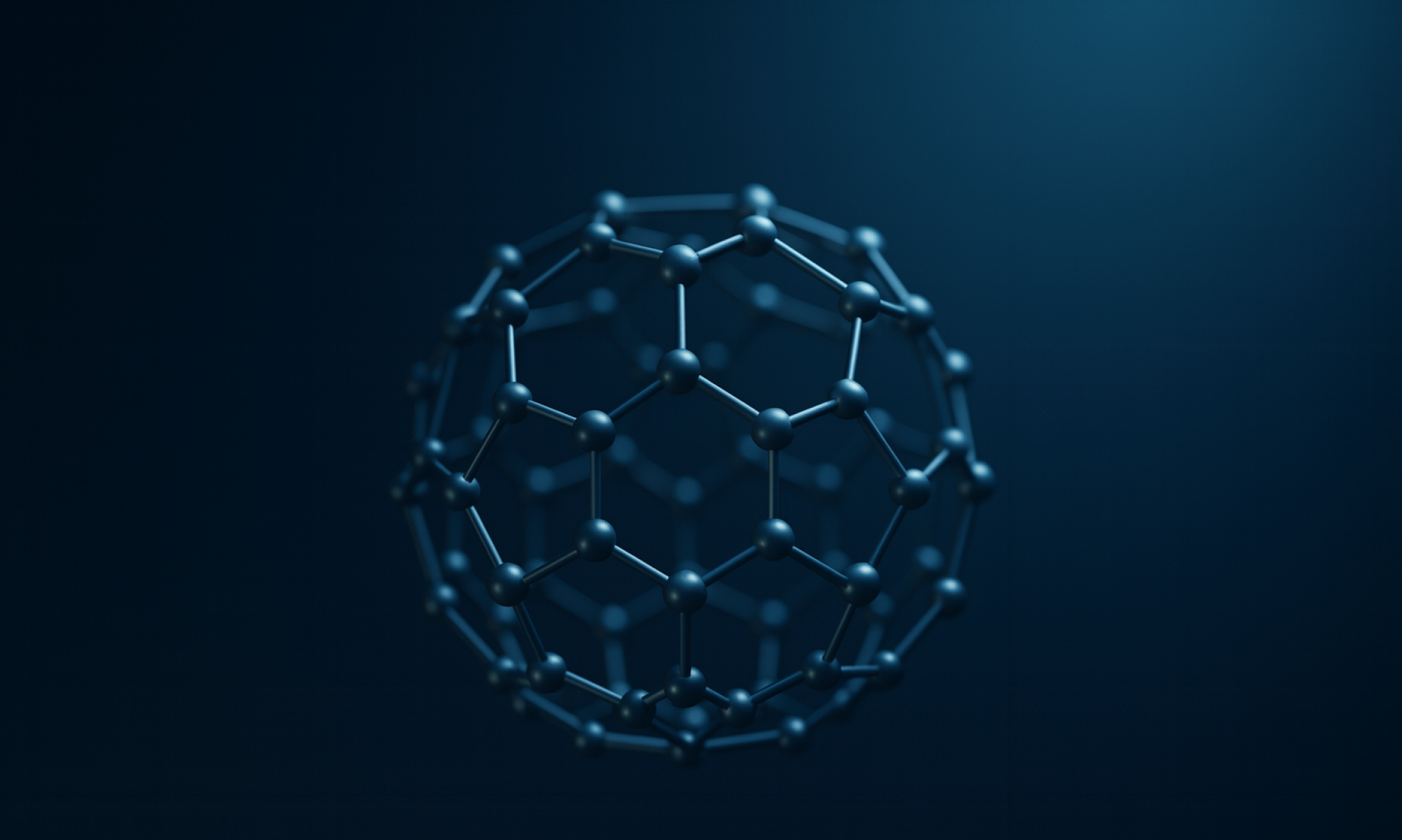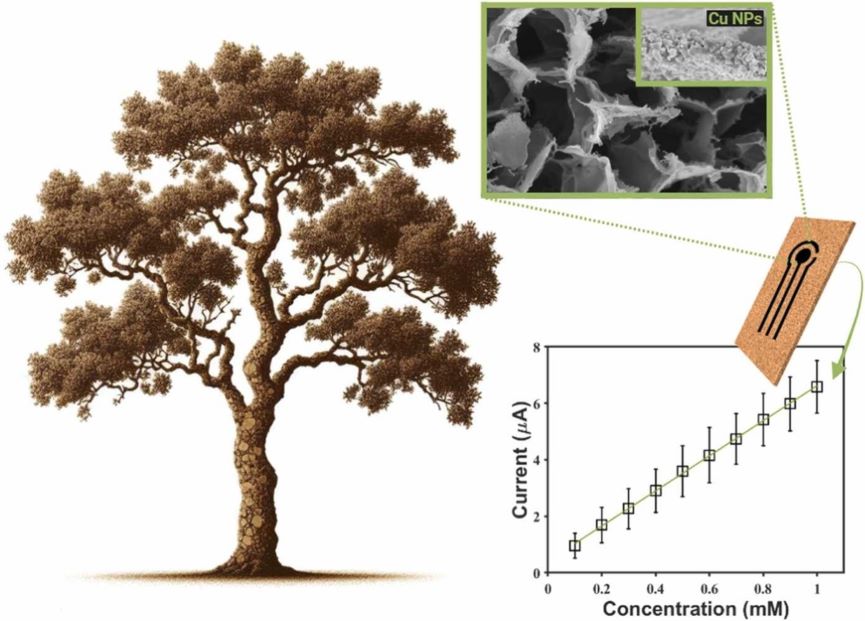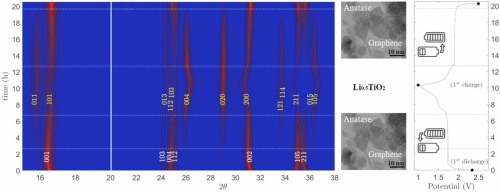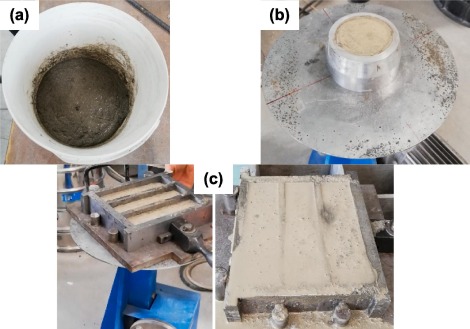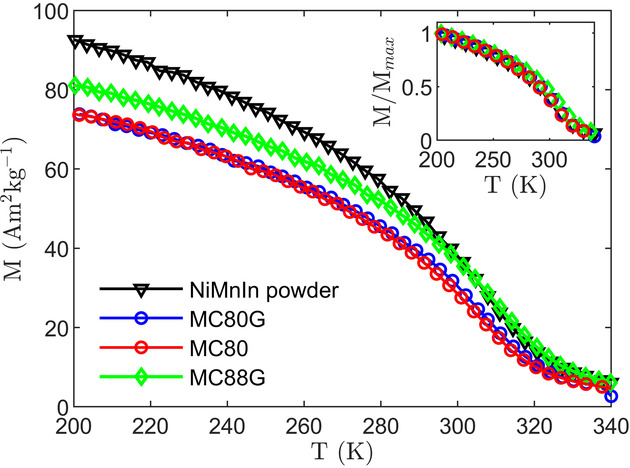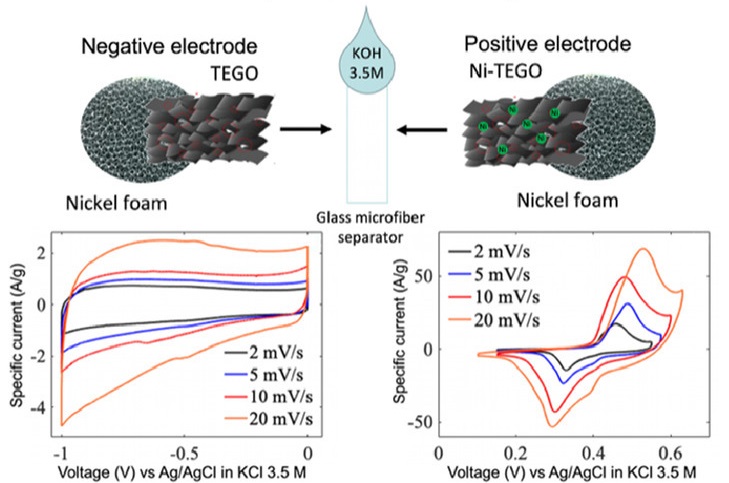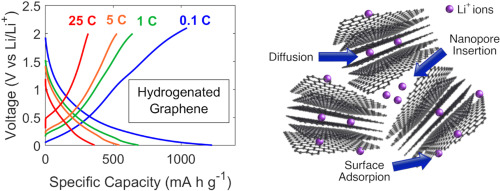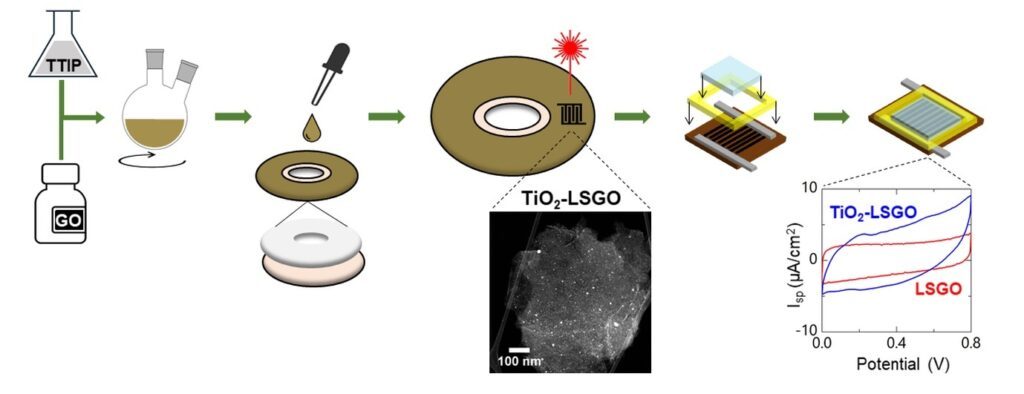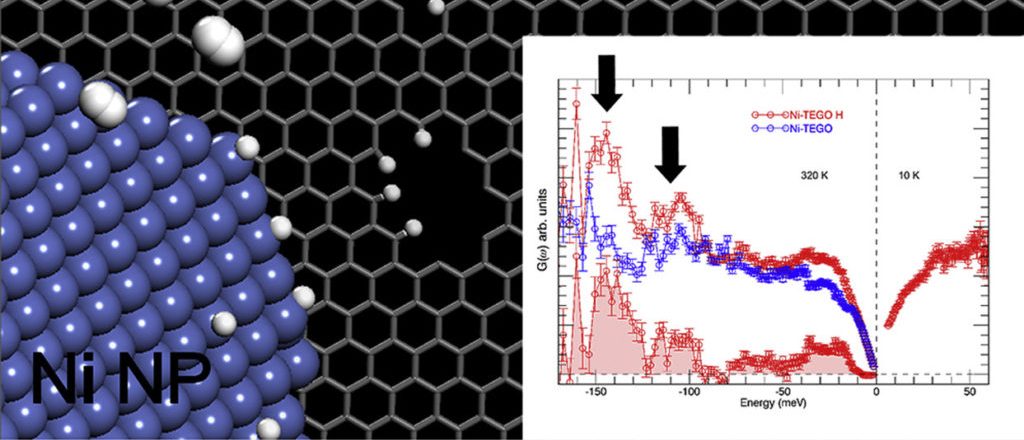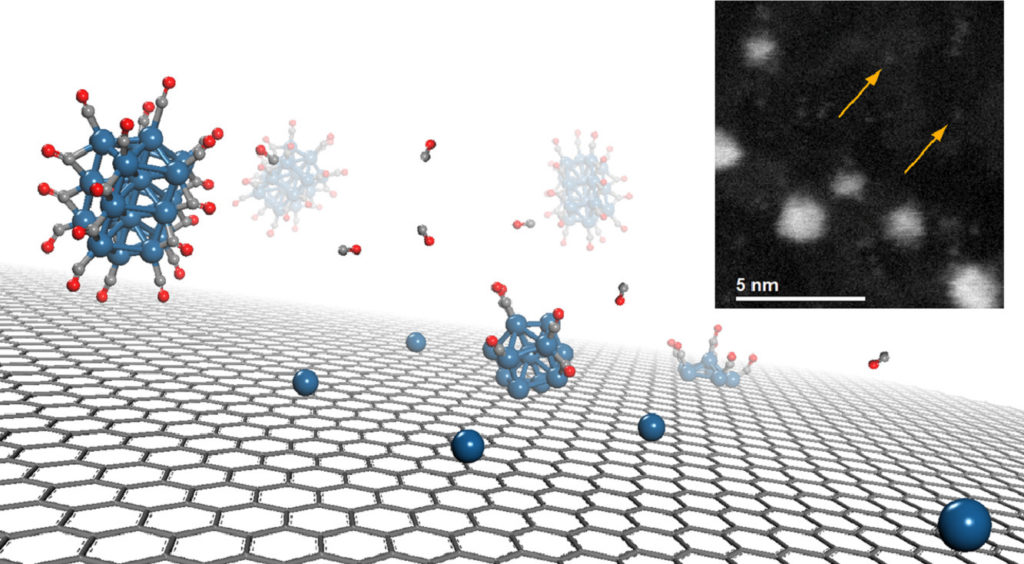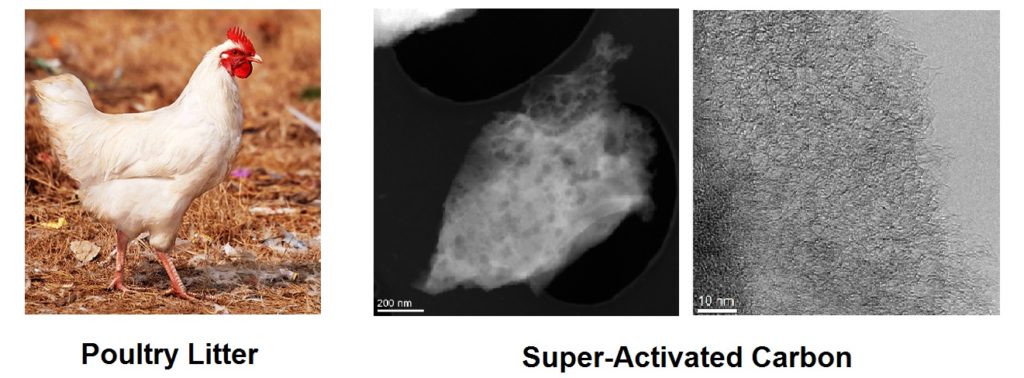Laser Induced Graphene (LIG) is a highly versatile material with exceptional electrical conductivity and large surface area obtained through the laser pyrolysis of aromatic plastics like polyimides. The recent remarkable discovery that LIG can also be synthesized from environmentally friendly materials like cork, extends application to the manufacture of sustainable, biocompatible, and eco-friendly devices such as biosensors. Here we present the fabrication of a novel “green” non-enzymatic glucose sensor obtained by direct laser writing of flexible cork sheets. To enable glucose detection, the cork sheets were wetted with an aqueous CuSO4 solution. Laser graphitization promoted the conversion of CuSO4 into CuOnanoparticles and resulted in formation of copper-cork Laser Induced Graphene (Cu-cLIG) materials displaying high surface area and high density of CuO NPs embedded in the cLIG matrix. The sensor showed excellent glucose sensing performance in buffer and good selectivity over interfering molecules. A fully laser written sensor was also fabricated and tested for detection of glucose in artificial urine. The sensor exhibited high stability and reproducibility, allowing glucose detection in artificial urine with a high sensitivity of and a LOD of . This easy and eco-friendly fabrication method, combined with the use of renewable and abundant precursor materials, paves the way for the development of truly sustainable sensing platforms for future green electronics.
Defective graphene decorated with TiO2 nanoparticles as negative electrodes in Li-ion batteries
In this work, the performance of novel negative electrodes for Li-ion batteries based on defective graphene synthesized via a scalable thermal exfoliation of graphite oxide and decorated with TiO2 nanoparticles is investigated. Titania polymorphs are interesting as battery electrode materials, owing to their high cycle stability, safety, abundance and negligible solid electrolyte interphase formation and volume changes upon cycling. Defective graphene, on the other hand, can embed TiO2 nanoparticles, forming a conductive hybrid nanocomposite anode material for Li-ion batteries, with improved Li-ion and electron transport, optimising power density. Here we propose two different synthetic approaches for the decoration of graphene with TiO2 nanoparticles: I) a novel chemical route where TiO2 nanoparticles, mainly anatase, were grown on graphene in hydrothermal mild conditions and II) a physical solid-state approach where hydrothermal TiO2 nanoparticles and graphene were mixed together via high energy ball-milling. The synthesized materials were analysed via powder X-ray diffraction, micro-Raman spectroscopy and HR-TEM, while the electrodes were electrochemically tested. Operando synchrotron diffraction was conducted on half-cell to investigate phase transitions in the electrode materials. Even in presence of small amount of graphene, significant improvement in capacity, reversibility, and high-rate capability were observed. In particular, the sample obtained through the addition of 1 wt% of graphene displayed a reversible capacity of more than 180 mA h/g after prolonged and wearing cycling. This result outperforms by 327 % the reversible capacity of pure TiO2 electrode.
Reproduced with permission. Copyright 2023, Elsevier
Effect of GO nanosheets on microstructure, mechanical and fracture properties of cement composites
The aim of the present paper is to investigate the effects of graphene oxide (GO) nanosheets addition in a cement-based material from both a microstructural and a mechanical/fracture point of view. In particular, an experimental campaign is performed on both plain mortar and mortar reinforced with 0.03% GO nanosheets, obtained through the Brodie’s method. The chemical and microstructural characterisation of the above materials is carried out by employing X-ray powder diffraction and SEM-EDS analyses, whereas the mechanical properties and fracture toughness are determined through flexural, compressive and fracture tests.
Reproduced with permission. Copyright 2022, Elsevier
Graphene-Based Magnetocaloric Composites for Energy Conversion
Herein, a simple, versatile, and cost-effective method to fabricate innovative thermal conductive magnetocaloric (MC) composites, which offers a smart solution to manufacture active elements with desired geometries, overcoming the current thermal and mechanical limits of the most studied MC materials, is presented. The composite is prepared by embedding powder of a MC material in an epoxy matrix enriched with a graphene-based material, obtained by thermal exfoliation of graphite oxide. The graphene-enriched composite shows a significant improvement of the MC time response to the magnetic field, due to the formation of a 3D network that bridges the MC particles and reduces the metal–matrix contact resistance, thus creating a percolation path for an efficient heat transfer. Because of the simplicity and scalability of the preparation method and the great enhancement in response time, these new functional composites represent an important step for the effective application of MC materials in thermomagnetic devices for the energy conversion.
Reproduced with permission. Copyright 2022, Wiley
Asymmetric supercapacitors based on nickel decorated graphene and porous graphene electrodes
Thermal exfoliation of graphite oxide is a scalable way to produce macroscopic amount of defective graphene-based compounds with high specific surface area, ideal as electrode materials in high-performance electrochemical supercapacitors. In order to increase the stored energy, defective graphene has been decorated with Ni nanoparticles without exposing the system to air. During the first charge cycle in an aqueous electrolyte (KOH 3.5 M), Ni anchored to graphene proved to easily convert to Ni(OH)2 at the nanoscale and hence to reversibly assume Ni2+ and Ni3+ valence during cyclic voltammetry, through its conversion to NiOOH. Such reversible faradaic mechanism led to a one order of magnitude increase of the specific capacitance of electrodes, reaching up to 1900 F/g at 2 mV/s in KOH 3.5 M. An asymmetric supercapacitor was obtained by coupling a pure graphene negative electrode with a Ni decorated graphene positive one. The supercapacitor, operating with aqueous electrolyte, was successfully cycled in the 0–1.5 V voltage range, reaching a maximum specific energy of 37 Wh/kg and a maximum specific power of 5 kW/kg. The devices displayed good reversibility and retained 72% of the specific energy over 10 thousand of cycles. Such promising results disclose to possible industrial implementation of graphene-based supercapacitors, for a wide range of energetic application.
Reproduced with permission. Copyright 2022, Elsevier
Combined capacitive and electrochemical charge storage mechanism in high-performance graphene-based lithium-ion batteries
Improvements in lithium (Li)-ion battery technology can be achieved by developing novel, high-performance electrode materials. Graphene appears to be a good candidate as an anode material for Li-ion batteries thanks to the similarity with graphite, the good electrical conductivity, the ability to achieve fast charge and discharge cycles, and the higher capability to host Li ions. Our previous studies demonstrated the capability of intercalating Li in graphene-based electrodes with a high specific capacity of 500 mA h/g at C/5 current. In this study, graphene, synthesized through scalable thermal exfoliation of graphite oxide, and hydrogenated graphene are used to assemble optimized Li-ion half-cells, which are systematically characterized by means of electrochemical measurements. Hydrogenated graphene boasts an impressive reversible specific capacity with fast charge/discharge capabilities, exceeding 370 mA h/g even at 25 C rate. Diffusion mechanisms of Li are characterized at different states of intercalation by means of electrochemical impedance spectroscopy. In addition, a novel combined electrostatic and electrochemical charge storage mechanism of Li ions in graphene-based electrodes is proposed, based on three-electrode cyclic voltammetry investigation. Furthermore, graphene and hydrogenated graphene anodes are paired with commercial cathode materials to study the feasibility of their application to full cells.
Reproduced with permission. Copyright 2022, Elsevier
In situ decoration of laser-scribed graphene with TiO2 nanoparticles for scalable high-performance micro-supercapacitors
Graphene-based miniaturized supercapacitors, obtained via laser conversion of suitable precursors, have been attracting recent attention for the production of energy storage small-scale devices. In this work, a one-pot synthesis of TiO2 nanoparticles embedded in porous graphene-based electrodes has been obtained with the LightScribe® technology, by converting the precursor materials through the absorption of a DVD burner infrared laser light. Enhanced electrochemical performance of devices has been achieved thanks to the combination of faradic surface reactions, arising from metal oxide nanoparticles, with the conventional electrochemical double layer capacitance, arising from porous graphene. Micro-supercapacitors, consisting of TiO2-graphene electrodes, have been tested by investigating two hydrogel polymer electrolytes, based on polyvinyl alcohol/H3PO4 and polyvinyl alcohol/H2SO4, respectively. Specific areal capacitance up to 9.9 mF/cm2 are obtained in TiO2-graphene devices, corresponding to a volumetric capacitance of 13 F/cm3 and doubling the pristine graphene-based device results. The micro-supercapacitors achieved specific areal energy and specific areal power of 0.22 μWh/cm2 and 39 μW/cm2, along with a cyclability greater than 3000 cycles. These high-performance results suggest laser-scribed TiO2-graphene nanostructures as remarkable candidates in micro-supercapacitors for environment-friendly, large-scale and low-cost applications.
Reproduced with permission. Copyright 2021, Elsevier
Neutron scattering study of nickel decorated thermally exfoliated graphite oxide
Surface decoration of graphene-based nanostructures with metals has been predicted to be an efficient way towards the development of resistant catalysts and novel materials for energy applications, such as hydrogen production and storage. We report on an extensive neutron scattering study of a defective graphene-based material decorated with nickel nanoparticles, obtained via the chemical decoration of thermally exfoliated graphite oxide. The combination of neutron diffraction and inelastic neutron scattering measurements has been used to characterize the low-dimensional carbon backbone and the presence of the nickel nanoparticles, organized at the nanometer scale on the graphene plane. The structural features of this system, along with the nickel capability of dissociating the hydrogen molecule upon hydrogen treatment, are herein discussed.
Reproduced with permission. Copyright 2020, Elsevier
Platinum carbonyl clusters decomposition on defective graphene surface
Having single atoms or small clusters docked onto a single layer graphene represents a charming feature for energy-storage and catalysis. Unfortunately, the large cohesion energy of transition metals often prevents the isolation of nanoscopic clusters, which invariably tend to aggregate. The decoration of defective graphene layers with single Pt atoms and sub-nanometric clusters is herein achieved by exploiting metal carbonyl clusters, as precursor, and investigated by means of transmission electron microscopy and X-ray photoemission spectroscopy. Unexpectedly, the process of aggregation of Pt into larger clusters is inhibited onto the surface of defective graphene, where the Pt-clusters are found to fragment even into single metal atoms.
Reproduced with permission. Copyright 2019, Elsevier
Super-activated biochar from poultry litter for high-performance supercapacitors
We report on the preparation of a novel hierarchically-porous super-activated carbon originating from organic waste with specific surface area exceeding 3000 m2/g, obtained starting from biochar derived by the pyrolysis of poultry litter. The chemical activation process proved to be efficient to remove the majority of impurities other than carbon, stabilizing a highly porous hierarchical structure with local graphene-like morphology. The presence of P and S with concentration below 0.1 wt% distinguishes this activated carbon from the usual ones obtained from vegetal sources. Thanks to these features, the obtained porous compound demonstrated to behave as an excellent electrode material for high-performance symmetric supercapacitors, reaching high specific capacitance up to 229 (13) F/g. Remarkably, the devices also supply high current density of 10 A/g without using any conducting additives and display high power density and reliability. Moreover, these optimal performances have been obtained operating by using simple eco-friendly electrolytes, like KOH and Na2SO4 aqueous solutions. The availability, the biocompatibility and the inexpensiveness of the starting materials, together with the low environmental impact of the electrolyte, suggest possible large-scale applications for such devices, for example in the field of transportation or in renewable energy-grids, but also in the field of bio-medicine.
Reproduced with permission. Copyright 2019, Elsevier.
